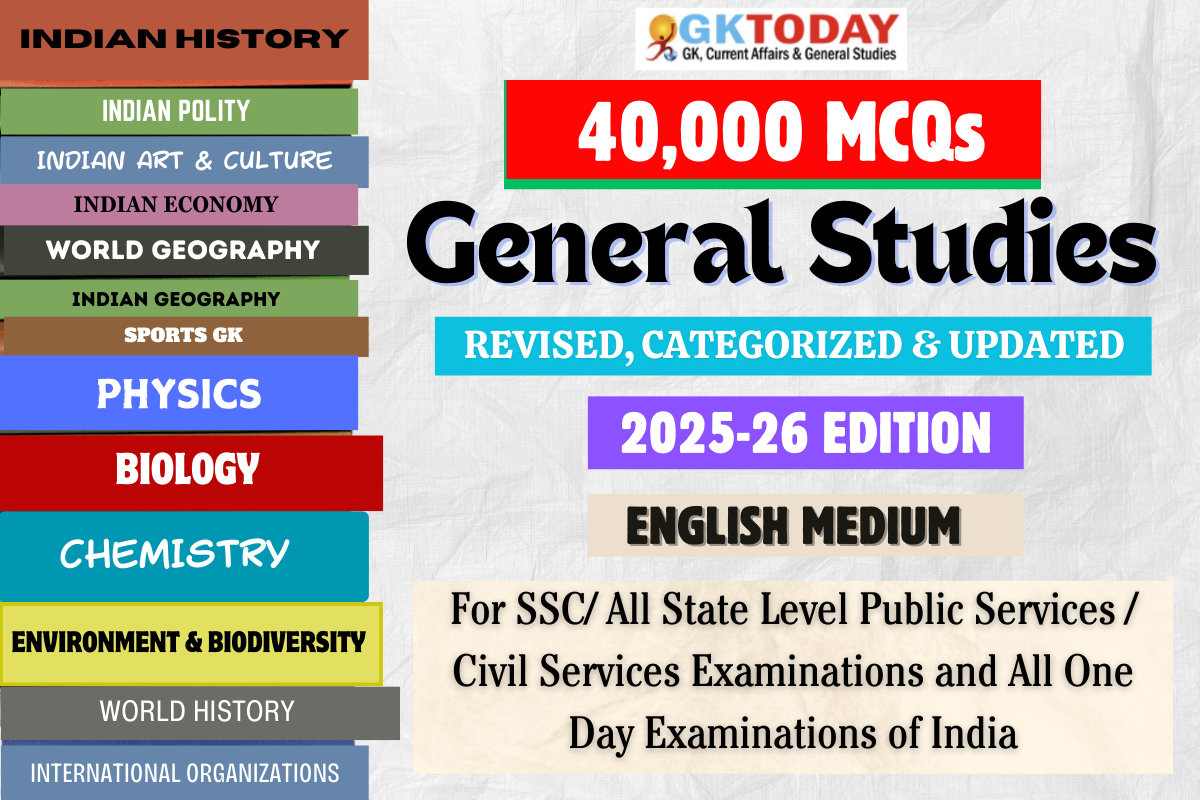41. The ‘spinning jenny’ was invented in:
[A] 1764
[B] 1756
[C] 1765
[D] 1777
Show Answer
Correct Answer: A [1764]
Notes:
In 1764, Hargreaves invented the ‘spinning jenny’. This machine could spin eight threads at the same time, instead of one.
42. The Washington Naval Conference was held in:
[A] 1922-23
[B] 1920-21
[C] 1919-20
[D] 1921-22
Show Answer
Correct Answer: D [1921-22]
Notes:
At the end of the First World War Japan emerged as a superior military power. Hence, in order to control Japan’s Navy the Washington Naval Conference was held in 1921-22. But this was only a temporary measure.
43. Who invented vaccination?
[A] James Simpson
[B] Edward Jenner
[C] Alexander Fleming
[D] Christian Barnard
Show Answer
Correct Answer: B [Edward Jenner]
Notes:
The smallpox vaccine was the first successful vaccine to be developed. The process of vaccination was first publicised by Edward Jenner in 1796, who acted upon his observation that milkmaids who caught the cowpox virus did not catch smallpox. Before the introduction of a vaccine, the mortality of the severe form of smallpox— variola major— was very high. Historical records show that a method of inducing immunity was already known. A process called inoculation, also known as insufflation or variolation was practiced in India as early as 1000 BC.
44. Who invented the revolver?
[A] Edward Jenner
[B] Alexander Fleming
[C] Albert Einstein
[D] Samuel Colt
Show Answer
Correct Answer: D [Samuel Colt]
Notes:
Samuel Colt was an inventor and industrialist who created the revolver most notably the 45 calibre Peacemaker model, introduced in 1873 and paved the way for the interchangeable parts system of manufacturing.
45. Who among the following coined the term “battery” to describe linked capacitors?
[A] Benjamin Franklin
[B] Luigi Galvani
[C] John Frederic Daniell
[D] Lewis Urry
Show Answer
Correct Answer: A [Benjamin Franklin]
Notes:
Benjamin Franklin coined the term ‘battery’ to describe an array of charged glass plates. A battery, which is actually an electric cell, is a device that produces electricity from a chemical reaction.
46. Who is the author of “The Audacity of Hope”?
[A] Nayantara Sehgal
[B] Aravind Adiga
[C] Vikram Seth
[D] Barack Obama
Show Answer
Correct Answer: D [Barack Obama]
Notes:
“The Audacity of Hope” is a book written by Barack Obama, who served as the 44th President of the United States from 2009 to 2017. This book was published in 2006 and played a significant role in shaping Obama’s political image and ideas during his rise to the presidency. In the book, Obama discusses his vision for America, his policy proposals, and his thoughts on various issues, offering readers insight into his political philosophy and aspirations for the future of the United States. It became a bestseller and is considered an important work in the realm of political literature.
47. Which of the following is India’s highest honour in the field of literature?
[A] Saraswati Samman
[B] Vyas Samman
[C] Kalidas Samman
[D] Jnanpith Award
Show Answer
Correct Answer: D [Jnanpith Award]
Notes:
The Jnanpith Award is India’s highest honour in the field of literature. Along with the Sahitya Akademi Fellowship, it is one of the two most prestigious literary honours in the country. The award was instituted in 1961.
48. Which of the following international organizations was the Philippines a founding member of?
[A] European Union
[B] Association of Southeast Asian Nations (ASEAN)
[C] North Atlantic Treaty Organization (NATO)
[D] African Union
Show Answer
Correct Answer: B [Association of Southeast Asian Nations (ASEAN)]
Notes:
The Philippines is a founding member of the Association of Southeast Asian Nations (ASEAN), established to promote political and economic cooperation as well as regional stability among Southeast Asian countries.
49. During World War II, which two powers invaded and occupied Poland, leading to its division and suffering throughout the conflict?
[A] United Kingdom and France
[B] Italy and Japan
[C] Nazi Germany and the Soviet Union
[D] United States and Canada
Show Answer
Correct Answer: C [Nazi Germany and the Soviet Union]
Notes:
In September 1939, Poland was invaded first by Nazi Germany from the west and then by the Soviet Union from the east, leading to its occupation and division under the Molotov-Ribbentrop Pact. This event marked the beginning of Poland’s struggle and immense suffering during World War II.
50. What was the Warsaw Ghetto Uprising of 1943?
[A] A peaceful protest for economic rights
[B] A significant act of resistance against the Nazi occupation
[C] A military parade celebrating Polish independence
[D] A diplomatic negotiation for Polish sovereignty
Show Answer
Correct Answer: B [A significant act of resistance against the Nazi occupation]
Notes:
The Warsaw Ghetto Uprising in 1943 was a pivotal moment in Polish history, marking the largest Jewish revolt during the Holocaust. It was a courageous act of resistance against the Nazi forces occupying Poland, as the Jewish inhabitants of the Warsaw Ghetto fought fiercely for their dignity and freedom, despite facing overwhelming odds.

